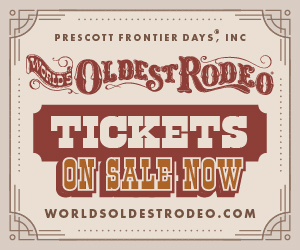 One of the objections we hear about trying to improve customer service is that much of the workforce is transient – young employees who do not have a commitment to stay. We hear some other harsh assumptions made about this particular workforce; for example, they act as though they are doing the employer a favor by working there, they don’t value customer service as important, and they just don’t have the same work ethic.
One of the objections we hear about trying to improve customer service is that much of the workforce is transient – young employees who do not have a commitment to stay. We hear some other harsh assumptions made about this particular workforce; for example, they act as though they are doing the employer a favor by working there, they don’t value customer service as important, and they just don’t have the same work ethic.
This drove us to talk to some twenty-somethings who are in our local workforce. We wanted to find out if this was truly an obstacle and if this portion of the workforce is totally hopeless, or if we could find some tips to help businesses that employ them.
Here’s what they told us. When employed by good leaders who clearly communicate their expectations, reward good work, are accessible, keep their word, are honest, and will not ask anything of the employees that they would not do themselves, then these employees will work hard and stay with that employer. Staying someplace where they are valued, have opportunities, and are rewarded for good work is more appealing than looking for new employment.
Build a Culture of Engagement
A critical piece of providing outstanding customer service is engaging the customer. As a leader, you need to engage your employees even more than your customers. By doing so, you will provide the model and the foundation for your employees to follow. What it boils down to is building a culture of engagement and the elements of this culture include: n Hiring, Orienting, Modeling, Communication, Expectations, Support, Recognition, Teamwork, Growth, Opportunity
Begin by bringing the right people on board. Use the hiring process to determine how compatible they will be with your mission, vision, and your team, as well as what they are looking for in a company. There is a wealth of assessments available to assist you in selecting someone with the right behaviors, values and aptitudes. However, you can discover similar information with skilled behavioral interviewing techniques. Build questions that include “Tell me about a time when…” and fill in the types of scenarios the candidate is likely to encounter that will tell you his/her style and values around customer service, teamwork and accountability. Successful businesses say they will keep looking until they find the right fit with their already well functioning teams. Once the new employee is on board, use the opportunity to provide a complete
orientation. In addition to how to do the work, introduce the employee to other departments. Be very clear about your expectations for customer service, quality, values, and teamwork. A full orientation to the business will give confidence to new employees so they can focus on delivering great service.
Set Goals and Recognize Contributions, Potential
What are your goals for an engaged employee and what they do for the business? At a very basic level, employees want to know what
is expected of them and to have the materials and equipment they need to do the work correctly. At this point, employees are focused on, “What do I get?” Having employees who meet your expectations is a great place to start, but there’s more.
After that, employees want to know that someone at work recognizes their contributions and potential. As a leader, you will want to make sure you are encouraging their development and providing constructive feedback on their performance. At this level, employees are asking, “What do I give?”
Work with the employee to identify his/her talents and areas for improvement and how his/her special skills are valuable to the future of the company. With a development plan and timeline in place, you will see self direction and initiative from your employee. Imagine the kind of potential you will realize!
Serious teamwork and collaborations for success happen when employees develop close relationships at work. Coworkers who are committed to quality and the mission and values of a company can collaborate to produce some incredible results. This is the level of engagement where employees are discovering, “Where do I fit in?”
Finally, the ultimate in engagement occurs when employees experience growth and
see opportunities to learn and grow. This is the stage where employees ask, “How can I grow?” At this point, they take ownership of the business and will contribute all they can to its success.
The rewards of a highly engaged workforce – regardless of the ages of your employees – are limitless and the costs of a disengaged workforce can be the downfall of your business. It’s a choice you have and one you will want to take seriously.FBN
• Employee disengagement costs businesses in the united States more than $300 billion a year.
• Engaged business groups rate 86 percent higher in customer satisfaction; have a 78 percent higher safety record, maintain a 70 percent lower turnover rate, deliver 70 percent higher productivity, and score 44 percent more in profitability. (Gallup Study)
Trish Rensink and Jamey Hasapis are owner partners of BelleWether Group, an organiza- tional development company. They can be reached at 928-853-8206.







